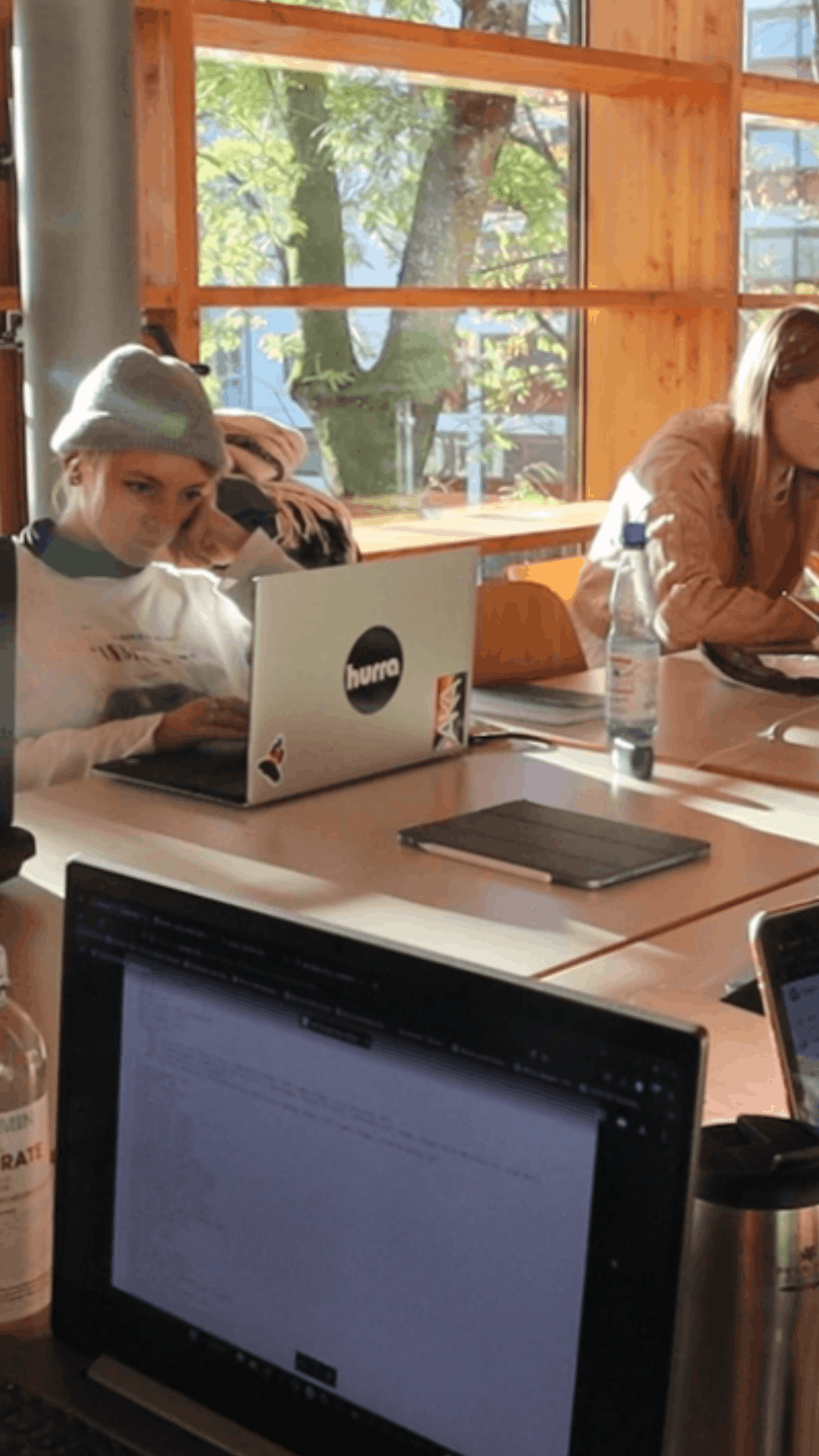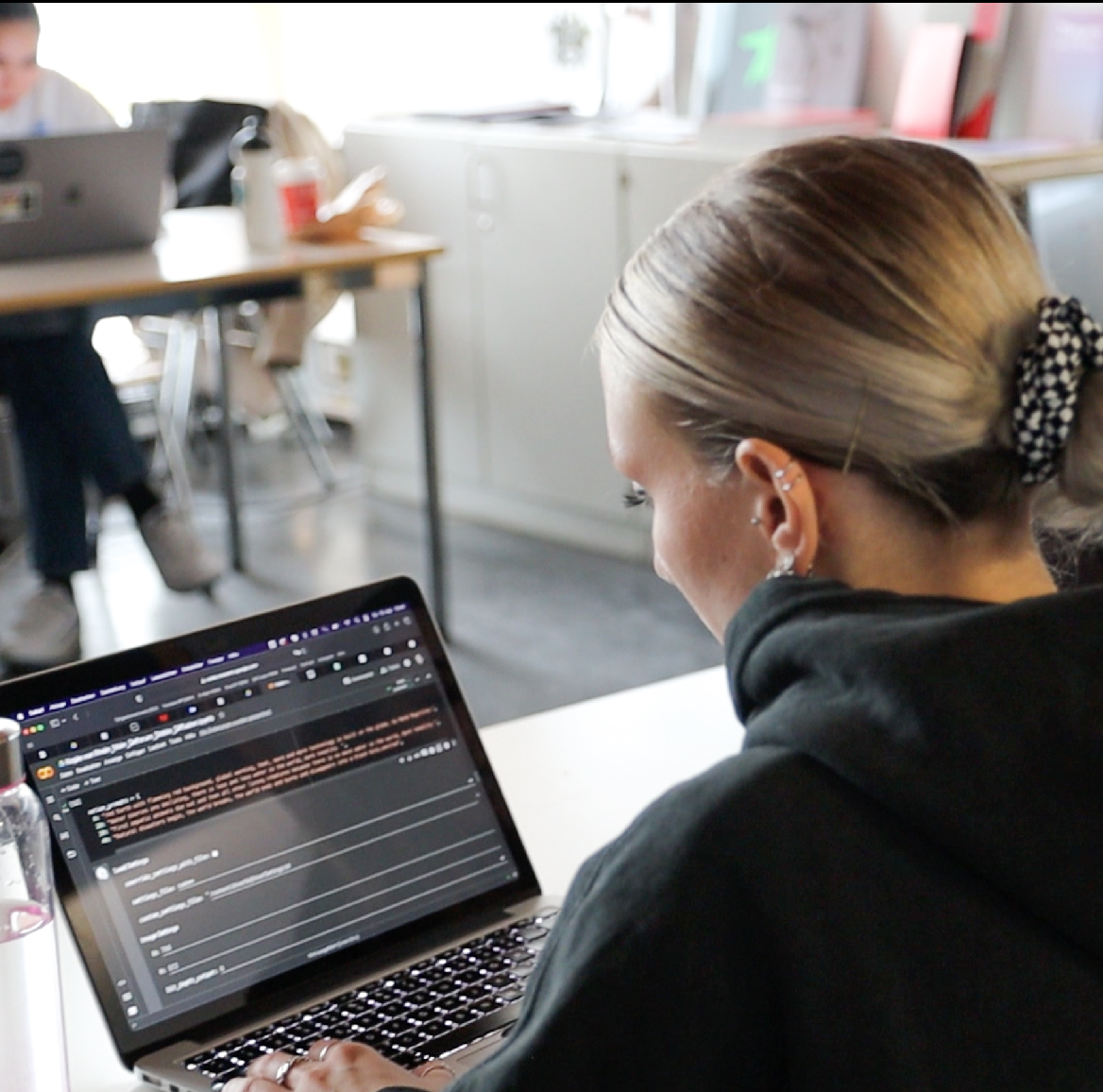Synthesizing Meaning
creativity and co-creation with AI
2022 - 2024
with Lisa-Marleen Mantel
“Synthesizing Meaning” is a hands-on workshop series dedicated to exploring image synthesis techniques, such as Generative Adversarial Networks (GANs) and diffusion models. Tailored to the specific needs of various art and design disciplines, including 3D and typography design, these workshops are meant to empower art and design students to integrate AI with traditional creative skills.
Participants delve into the collaborative potential of algorithms, learning to combine techniques like photography, sketching, drawing, and 3D modeling with AI to create unique works. A central tenet of the workshop series is the emphasis on tacit knowledge, enabling designers and artists to work with technology while preserving their individual artistic signatures, rather than being supplanted by it.
Beyond its practical applications, our “Synthesizing Meaning” workshops offer a crucial theoretical foundation for engaging with artificial intelligence. We encourage participants to critically reflect on ideologies often associated with new technologies, particularly AI, such as TESCREAL (Transhumanism, Extropianism, Singularitarianism, Cosmism, Rationalism, Effective Altruism, and Longtermism)1. This fosters a deeper understanding of AI’s broader societal implications.
Over the past two years, we observed a palpable tension between art and AI communities. Artists expressed anti-AI sentiment, often stemming from concerns about the unauthorized use of their work. Conversely, some in the AI community adopted an anti-art stance, asserting “fair use” as justification for using existing art without compensation. Our workshops directly addressed this schism. We seek to empower designers and artists to not only contextualize and critically reflect on these issues but also to subvert them through appropriation. By encouraging participants to make the technology their own, we fostered a creative approach to challenging prevailing narratives and reclaiming agency in the evolving landscape of AI.
Participants also gain valuable insight into the inner workings of AI models, explore the nuances of training data, and engage in robust discussions around concepts like fair use. Our adaptable curriculum ensures that the focus is finely tuned to the specific “Lehrgebiet” (area of expertise) of the inviting docent, providing a relevant and enriching experience for all attendees.
The seminar emphasized the appropriation of AI techniques to convey a high-level understanding of applied Machine Learning while retaining scrutiny on concurrent ethical and societal issues. Novel ways of co-creation with machines were explored, focusing on image generation techniques with natural language prompts.


A Collaborative Exploration
Designers in the silicon age proficiently mediate between the visceral and digital realms, when designing with and around technology. But how exactly do we reconcile disembodied technologies such as AI, with those aspects of the design profession that emphasize and often rely on tacit knowledge, gained through bodily multisensory experience and interaction? If AI, especially with the rise of Machine Learning heralds a shift from functional programming to systems being capable of performing tasks that are beyond mere automation, we could classify those systems as a new breed – a new species. Following this train of thought raised the question of where designers would place themselves into the equation in order to proactively anticipate this new form of interspecies co-creation. How could we apply our tacit competencies in this novel union? In order to track down these answers, the workshop tied into the concurrent discourse around AI, AGI and embodiment that ranges from materialist skepticism, regarding ML systems as mere correlation machines, to technological saviorism and farther to esoteric techno-animism.
The seminar series was oriented towards collaboratively finding an approach to dealing with applied Machine Learning techniques while developing speculative future visions on machine-human hybridization. The workshop introduced and reflected on the views of posthuman thinkers such as Rosi Braidotti, Donna Haraway, and Katherine Hayles. Participants were invited to construct and share future visions of human-machine collaboration while on a practical level, appropriating AI tools and explore how they could be integrated into their individual workflows.
Learnings made during the workshop through practical experiments served as a starting point to reflect on and discuss possible future scenarios and modalities of human-machine interaction and collaboration. The experimental short film “Borrowed Limbs” served as an example of both speculative storytelling and the appropriation of AI tools.
Practical Exercises and Theoretical Grounding
Following the practice of research by design, this workshop emphasized the designerly perspcective on novel AI techniques. Practical exercises were the starting point for investigating how imagery is inferred and for a deep dive into the data and methods involved in training Machine Learning models.
Participants were introduced to a modified version of a Google Colab Notebook by Katherine Crowson which combines CLIP with VQGAN (“Vector Quantized Generative Adversarial Network“) and optionally a custom diffusion model.2 This allowed artists to create various exciting visuals merely by inputting text. Through this practical exploration, participants encountered the flaws and characteristics of these models, investigating the datasets they have been trained on.
The central task was for participants to select an organism, human or non-human, and describe a future collaboration with AI as a new species. These speculative concepts were then visualized with the techniques learned. The results reflected on certain aspects of future developments as projected by the participants, and also revealed learnings about how the model ‘ticks’. The outcomes were a collection of generated images reflecting on posthuman future visions, the story of their inception, and the conclusions drawn from them, which were combined into a collective work.
Synthesizing Meaning
| Date | Event | Location |
|---|---|---|
| Jan 2024 | Synthesizing Meaning at Elastique. | Elastique., Cologne, Germany |
| Nov 2023 | Synthesizing Meaning at Werkwoche, workshop | Hochschule Augsburg, Germany |
| Nov 2023 | Synthesizing Meaning, workshop | TH OWL Detmold, Germany |
| Oct 2023 | Synthesizing Meaning at KHM, workshop | KHM, Cologne, Germany |
| Oct 2023 | AI PANIC!!111!, workshop | Liepāja University, Latvia |
| Apr 2023 | Synthesizing Meaning II Workshop | OWL Detmold, Germany |
| Apr 2023 | Synthesizing Meaning II Workshop | Hochschule RheinMain, Germany |
| Nov 2022 | Synthesizing Meaning Workshop | Hochschule RheinMain, Germany |
| Apr 2022 | Synthesizing Meaning with VQGAN and CLIP | DHBW Ravensburg University of Applied Sciences, Germany |
-
Timnit Gebru and Émile P. Torres, “The TESCREAL bundle: Eugenics and the promise of utopia through artificial general intelligence,” First Monday 29, no. 4 (April 1, 2024), https://firstmonday.org/ojs/index.php/fm/article/download/13636/11599, doi: https://dx.doi.org/10.5210/fm.v29i4.13636. ↩
-
Katherine Crowson et al., “VQGAN-CLIP: Open Domain Image Generation and Editing with Natural Language Guidance,” arXiv, last revised September 4, 2022, arXiv:2204.08583, https://doi.org/10.48550/arXiv.2204.08583. ↩